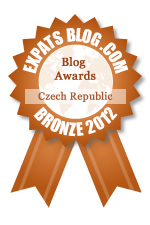By Ricky, on September 23rd, 2017 Kostel sv Martina/St Martin’s Church, Markvartice © Ricky Yates
Today saw the reconsecration of Kostel sv Martina/St Martin’s Church in the nearby village of Markvartice. For the somewhat irreligious Czech Republic, renovating an abandoned Church building and bringing it back into liturgical use, is quite an event.
Whilst there has been a Church on the current site since the thirteenth century, the building in its present baroque appearance, dates from a rebuilding between 1701-04. It started falling into disrepair following the end of the Second World War, a result of the expulsion of the majority Sudetendeutsche population in 1945-6 and the communist takeover of power in Czechoslovakia, shortly afterwards.
The Church was last used for liturgical worship in 1966. By the late 1980s, all that was left standing were . . . → Read More: Kostel sv Martina/St Martin’s Church, Markvartice
By Ricky, on October 6th, 2016
Palace of Culture and Science, Warsaw © Ricky Yates
Following lunch on Sunday 25th September, which marked the official end of the 2016 Eastern Archdeaconry Synod, quite a number of the Synod members stayed on for an afternoon walking tour through the centre of Warsaw. It was good to have the opportunity to see something of the Polish capital before returning to Prague the following day.
The first building that caught my eye after the taxi dropped me off in the city centre, was the tower of the Palace of Culture and Science. This building is a classical example of Stalinist-Baroque architecture and bears a striking resemblance to Hotel International here in Prague, located just a few hundred metres from the Chaplaincy Flat. Both are based on the design of Moscow State . . . → Read More: Warsaw
By Ricky, on September 5th, 2016
Salvátor Church © Ricky Yates
Back on the last Sunday of January 2016, we were joined at St. Clement’s for worship by Alex and Kathleen, a Czech-British couple, together with about fifteen of their family and friends. Alex and Kathleen live in the UK and are regular worshippers at their local parish church. But they also maintain a flat in Prague and, whenever they spend time here, they always join us for worship at St. Clements.
Alex was celebrating his ninetieth birthday, hence his family and friends had travelled from various parts of the world, to be in Prague to mark this special occasion. And attending our Church service that morning, was seen as an integral part of the weekend of celebrations.
A few months previously, Kathleen had asked me if they could . . . → Read More: Are Czech Churches welcoming?
By Ricky, on October 11th, 2015 Kraków, Poland © Ricky Yates
You would think that with Poland and the Czech Republic being next-door to each other, and with Polish and Czech both belonging to the West Slavic group of languages, the two countries and their respective populations, would have much in common. Surprisingly, they don’t! Whilst what follows is based on seven years of living in the Czech Republic, and only the past five days travelling through Poland, I hope it still has some validity 🙂
Some contrasts are indisputable. The area of Poland is four times greater than that of the Czech Republic. Driving across Poland these last few days has forcibly brought this home to me. It is a big country! Likewise, the population of Poland is nearly four times greater than that of the Czech Republic – 38.5 million against 10.5 million.
But even with . . . → Read More: Contrasts between the Czech Republic and Poland
By Ricky, on October 3rd, 2015 Frauenkirche, Dresden © Ricky Yates
The Frauenkirche in Dresden is an 18th century Protestant Church featuring a 96m high dome resting on eight slender pillars. It was severely damaged during allied bombing raids on the city on 13th February 1945 and collapsed two days later. Because, following the end of World War Two, Dresden was situated in the Soviet zone of occupation which became the satellite communist state of East Germany, no efforts were made by the authorities to rebuild the Church. Instead, in 1966, the ruins were declared a ‘memorial against war’.
Following the collapse of communism and the reunification of Germany, quite appropriately 25 years ago today 🙂 , a society was formed to promote the rebuilding of the Frauenkirche and to raise funds to finance the project. Reconstruction commenced at the beginning of 1993 and was completed in 2005. The . . . → Read More: English-language Anglican worship in the Frauenkirche, Dresden
|
rickyyates.com is a participant in the Amazon Services LLC Associates Program, an affiliate advertising program designed to provide a means for sites to earn advertising fees by advertising and linking to Amazon.
|



Recent Comments